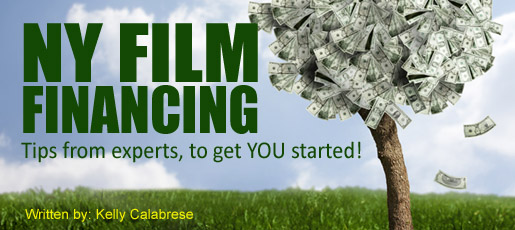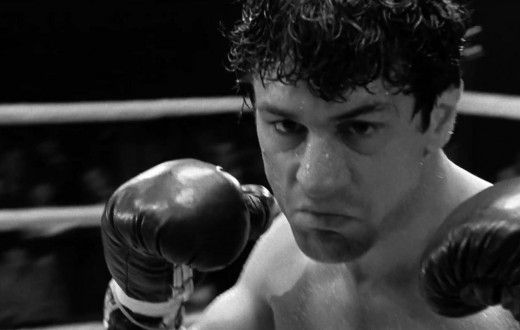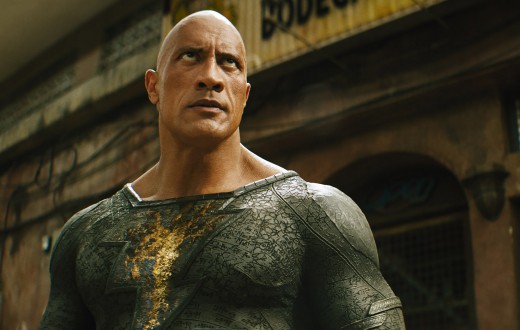Start spreading the news…
“There has never been a better time to make and produce independent films in New York and elsewhere,” says Steven Beer, a counsel to numerous award-winning writers, directors and producers.
Steven Beer shared these inspiring words at The New York Lounge during Sundance 2011, where he co-sponsored daily panel discussions along with The Governor’s Office for Motion Picture & Television Development .
In 2011, over ten New York films played at Sundance. These films got made because New York has a “great community of people who are excited to be involved in innovative, groundbreaking work.”
So, how do YOU get your film on a path to Sundance and the coveted box office?
“It’s a bit of a dance,” says Steven Beer. “The biggest question is in setting up a financial package. How do I get the talent if I don’t have money? And how do I get money if I don’t have talent?”
To help answer this question about finance and packaging, here are some tips from New York experts…
LIVE from The New York Lounge, Park City Utah!
Advice from a New York Producer…
 When it comes to making films in New York, the cost can be much lower than you expect!
When it comes to making films in New York, the cost can be much lower than you expect!
“We shot Martha Marcy May Marlene (A 2011 Sundance film) in upstate New York and when people find out the cost they say, “How come everyone can’t make films then?” says Rose Ganguzza, executive producer of many features, including The Guitar, Afterschool, Margin Call, and The Romantics.
“We had this amazing cast; John Hawkes, Sarah Paulson, Hugh Dancy. We put them up in a rundown farm in Upstate New York for seven weeks and they had such a great time.”
“All of the films that I’ve done have had superb casts,” shares Rose. “I find that our attitude in New York is a lot different and our talent pool is a lot different. Our talent pool includes people who really love their craft and the process of doing new things; people who love stories and are willing to put themselves out there at scale to do good material.”
To get strong talent, “I think one of the best dollars you can spend in the beginning of the process is with a casting director,” shares Rose Ganguzza . “Every director should create a relationship with a casting director who they have synergy with. It is very important to let professionals help you.”
Getting high caliber talent can be vital for financing.
“A lot of the money you put together on the film, or at least a third of it, comes against money for foreign rights and foreign rights are almost exclusively driven by talent.”
Once you secure talent for the film, to keep costs down “you have to be very economic in scheduling their time,” says Rose. “Make sure that you and the director are working closely together to keep their days to a minimum.”
Minimalistic methods help at every level.
As a producer, when Rose Ganguzza reviews a script she, immediately reads the lines to see all the things she can get for free or barter.
“There is another element in what we do as producers,” says Rose. “We use brands in a direct barter. That goes for everything from the art department, to costume, to transportation, to where you put the actors up.”
“There are more and more film friendly people than you can imagine and what I call multinational brands who are actually putting the money up against equity in the film for promotional reasons. “
They bottom line to saving money is, “to be very resourceful.”
Advice from a New York Casting Director…
Casting Directors can help organize your film, for better financing and packaging!
“As soon as you have your script ready to go out, you should come to me right away,” says Adrienne Stern, a casting director known for working closely with Directors and Producers to secure the types of casts that open doors to major film festivals and distribution packages.
“Even if you don’t have other elements in place in terms of financing or attorneys, there are often missing pieces that I can help with.”
“The first thing I will say to any filmmaker, is that we need to be very organized,” shares Adrienne Stern.
“Who are the managers of the project? The executive producer? The producer or people we can pull form and have a discussion with? Who is the director of photography in your film?”
” A lot of filmmakers forget that the actors, especially if you are a first time director, will ask, ‘Who is shooting the film?’ There has to be a confidence level. If you are a director and there is good information about you on IMDB, you better make sure that the information is available for an actor to look at. They will read your script and look for you on IMDB.”
Also, “I am a big believer in putting a website together for your film, just for that film. Have your reel on your website. The more professional you look, the easier it will be for me to go out and attach talent for you.”
“I have to work with you as a team,” says Adrienne Stern. “We have to figure out what our game plan is and what kind of talent we want. A lot of people will come to me and say we have X actor attached to play the lead role and I will then say to them, ‘Well, is this going to help us raise money?’ We may have to re-evaluate. Are you are going to find the talent you want based on the talent you have already attached?”
“If you put the money together yourself, then have the dream cast you want. But if you are looking to get to that next level, you will need to finance the film through other equity, you will need producers to come on board and will need to look at your script and direct your script and see where you can put in name actors. “
For example, “I worked on a film where there were three female leads and I said for them to combine two of the characters into one because two of the roles just were not big enough to go after name actors. They did that and it worked.”
“You have to dissect your script and say, ‘Here is a place where we have this great character. I want a familiar face, but is there enough for them to do?'”
“You also have to figure out when you are going to shoot your film.”
“A lot of people come to me and they are ready to shoot their film in March/April, hopeful that they are going to get this great cast. But they are not going to, because it’s pilot season that you are competing against along with major studios and great filmmakers who want to make their films for the Sundance deadline. If I were producing a film, I would shoot my film in the fall because that’s when actors have already done their other projects. They are finished with television and are ready to go out there and look for that film that is under one million. You have a window of August through December. That is something to think about when you go out to make your film.”
Advice from a New York Production Lawyer…
 Creating a film requires a strong formula!
Creating a film requires a strong formula!
“The most important element in making the project and getting money – is credibility,” says Jonathan Gray – A practicing attorney since 1990 and a dedicated advocate for emerging and established directors, producers, production companies, screenwriters, investors and distributors in film, television and other media.
“As a production lawyer, we work on 35 to 40 films a year, there has to be some structure where the money makes sense. “
“If you are making a $7,000 film, it is much different than if you are making a $7million film in terms of structure. You can’t make a 7 million film without a strong formula.”
As a part of this strong formula, “it is very important to have a cast and at the same time I am getting calls from the lawyers and managers saying, ‘is this real?'” shares Jonathan Gray. “Many times, you have someone attached to a project, you make an offer to Justin Timberlake, but in the legal world you cannot make an offer unless you can back it up. So that bottom line is subject to financing, subject to meeting the director.”
“If you go out there and are able to finance a film, if the talent is available and you have a start date – you can create a model where it makes sense for the actor. You can create a structure where the talent has a participation that is equitable, where they are investors in the film.”
“We have 18 films at Sundance this year and a lot of them are 1/2 million, million dollar films because they are good films, good product that attracts the talent. It attracts the DPs and casting directors and all these elements that come together to make money.”
“Preserving credibility is essential,” says Jonathan. “Be up front. Be transparent and create a model that is equitable, where people who are giving their blood and their time have a piece of the upside. There is a way to structure that, I promise you.”
Advice from the CEO of IndieGoGo…
If you put in the work – you can have a good result!
“I think film is one of the most active communities in fundraising. People are raising 5k, 10k, 75k – it’s really as much as you want to try and raise,” says Slava Rubin, CEO and co-founder of IndieGoGo – the largest international funding platform – which provides anyone with passion the tools to fulfill their dreams and fund creative, entrepreneurial or cause campaigns.
“In terms of how the process works, Indie GoGo is an open platform where anyone is allowed to create any campaign they want. We believe that fundamentally supply should meet demand and have equal opportunity.”
“In terms of how it works is… you offer perks in return. So, there is a shift in the way people think. It is not just about transactions, it is about relationships. You are offering products, experiences, services discounts.”
“In the film world, what comes up are discounted DVDs, getting your name in the credits, getting to walk in the movie, getting to be at Sundance -whatever you want to do,” says Slava Rubin. “You engage the audience using the tools we provide. You try and get your own traction and we get millions of page views, so you get an opportunity to get strangers to look at your campaign.”
“Some campaigns do not get a dollar from a stranger; some get 90% from complete strangers. So the question is how you get the 90%. There are three things that a good campaign is based on… 1. Having a good pitch. 2 being pro-active. 3. Having an audience that cares.”
“The same applies for the analog world, this just happens to be for online.”
“A good pitch specifically means – you want to have a video that engages the audience, which is personal and not a trailer. 120% more money will come into a campaign with an engaging video. You want to have cool perks, cool copy and a realistic goal and deadline. Set it between 1 and 120 days. We see the best activity happening between 30-60 days.”
“The second thing is being pro-active. Use all the tools you have out there. Everyone knows about Facebook, Twitter, Widgets, etc. You need to push out to your community and you need to be pro-actively updating. You don’t just update your campaign and walk away; you have to continually give updates. People want to know what is going on.”
“The third is having an audience that cares,” says Slava. “First you need to tap into your own credibility; your own inner circle. They validate your campaign typically before a stranger will give $1. Typically if you get 30-40% of your goal, strangers will start getting money.”
AND – a final word from The New York Lounge sponsors…
New York has amazing incentive programs!
“For films made for under fifteen million, you can get 30% of your below the line budget as a refundable tax credit that will come to you as cash when you finish your production. It will be almost everything you do below the line,” shares Pat Swinney Kaufman, Executive Director of the New York State Governor’s Office for Motion Picture and Television Development.
“Our program is designed for narrative feature films, episodic television and the pilots that lead to it. It works for low budgets as well as huge mega budgets. You have to apply before you start filming for the incentive. Our office will help walk new filmmakers through the process.”
“For films that are under 15 million, you do have to shoot at least one day on a qualified stage in New York. You can go to www.nylovesfilm.com, to see a list of sites.”
“Unless you spend 3 million on that stage, you also have to do 75% of your location work within New York State, ” says Pat Swinney Kaufman.
For post-production breaks… “You have to do 75% of your qualified post production in New York.”
“You can get everything done in New York,” shares Pat. “Our post production is amazing. You can do all of your color correcting, special effects and editing in New York. If you do that as well, you get 30% on all your below the line from beginning to end.”
“Another way to save money is to shoot in Buffalo or Rochester or Hudson Valley.”
“Never underestimate the value of going somewhere where they still think it’s 1950 in their price structures,” says Pat Swinney Kaufman. “There are many ways to keep your budget tight.”
For more information on New York film financing and incentives visit www.nylovesfilm.com.







